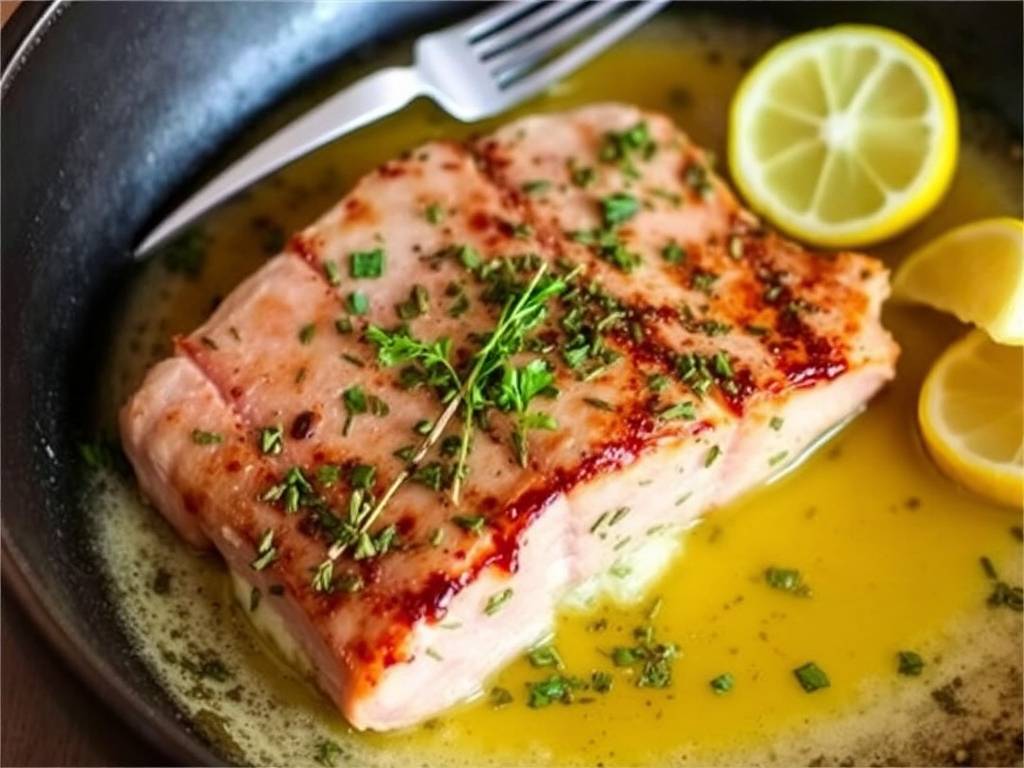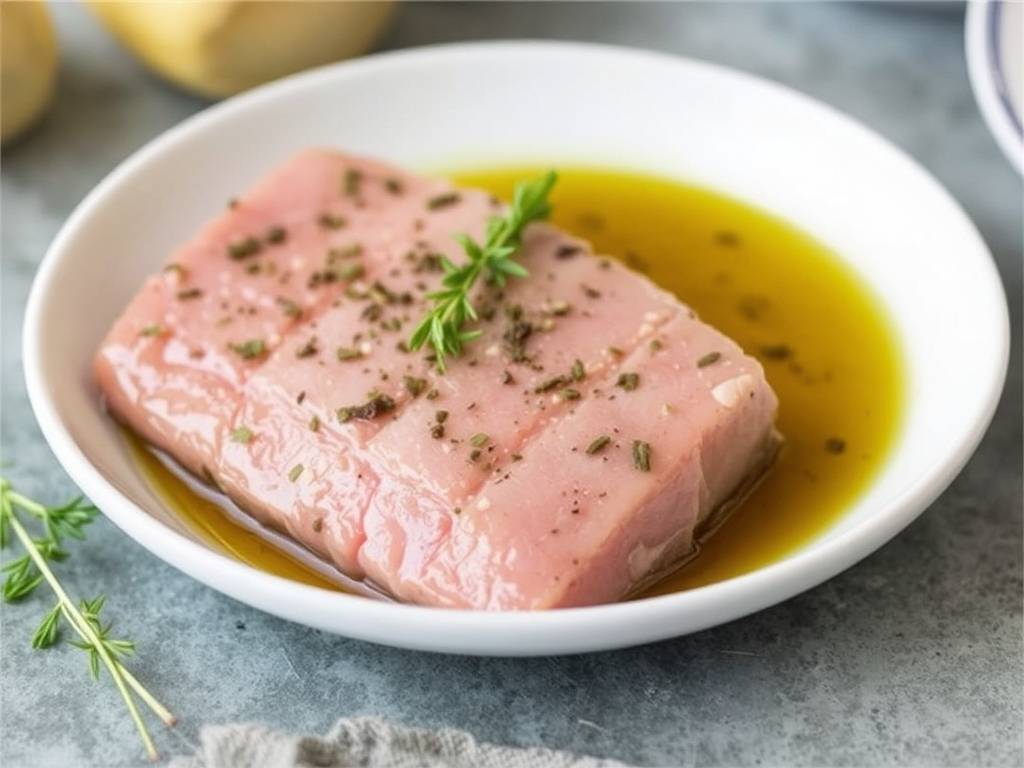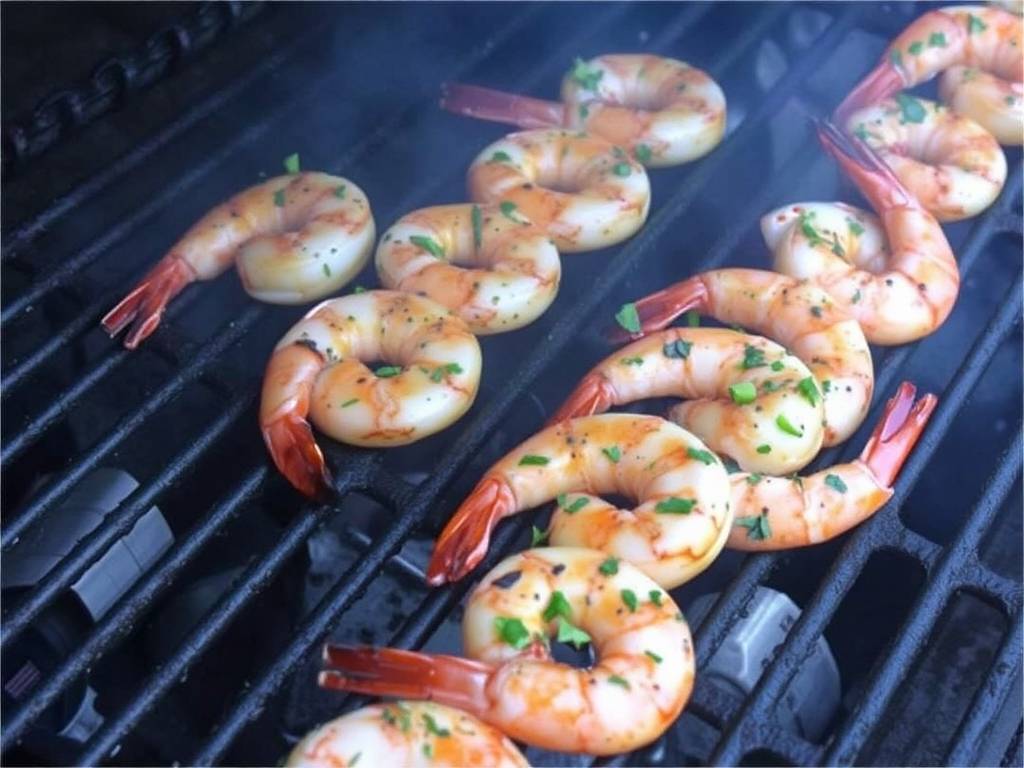The Art of Perfectly Seared Tuna Steak: A Symphony of Olive Oil and Herbs
There is a certain elegance to a perfectly cooked tuna steak. Unlike its flaky, fully-cooked counterparts, a great tuna steak celebrates the fish itself—its dense, meaty texture and rich, oceanic flavor. It is a dish that speaks of confidence in the kitchen, an understanding that sometimes, less is truly more. The method we will explore today is not about masking the tuna's natural character with heavy sauces, but about enhancing it through the judicious use of high-quality olive oil and a carefully curated selection of herbs. This is a recipe that is deceptively simple, where success hinges on the quality of your ingredients and the precision of your technique.
The Foundation: Selecting Your Tuna

The journey to an exceptional tuna steak begins at the market. Not all tuna is created equal for this purpose. You are looking for a cut that can stand up to high-heat searing while remaining sublime in the center. The two best choices are Ahi (Yellowfin) and Bigeye tuna. Both have a firm texture and a rich flavor that is ideal for searing. Bluefin is the ultimate luxury, with unparalleled marbling, but it is often prohibitively expensive and not the most sustainable choice.

When selecting your steak, look for a piece that is at least 1 to 1.5 inches thick. A thin steak will cook through before you have a chance to develop a proper crust, leaving you with a dry, overcooked result. The flesh should be a vibrant, deep red color, firm to the touch, and have a clean, fresh sea-breeze aroma. Any signs of browning, gaping, or a strong "fishy" smell are clear indicators to walk away.
The Aromatics: A Guide to Oils and Herbs
This recipe is a canvas for flavor, and your oils and herbs are the paints.
-
Olive Oil: Do not use your finest, most delicate extra virgin olive oil for searing. Its low smoke point means it will burn and become bitter at the high temperatures required. Instead, use a good-quality, robust extra virgin olive oil for finishing and dressing, and a more neutral, high-smoke-point oil for searing. A combination of avocado oil or grapeseed oil for the pan, followed by a drizzle of fragrant extra virgin olive oil at the end, is the professional's choice. The final drizzle, uncooked, delivers the grassy, peppery notes that make olive oil so beloved.
-
The Herbal Ensemble: We will use a blend of fresh and dried herbs to create layers of flavor.
- Fresh Herbs: For their bright, aromatic qualities, we will use them primarily after cooking. Fresh thyme, rosemary, and oregano are our woody, robust base. Their earthy notes complement the meatiness of the tuna. Fresh parsley or chives, finely chopped, will be our finishing touch, adding a pop of color and a fresh, clean flavor.
- Dried Herbs: Dried herbs have a more concentrated flavor that is excellent for creating a crust. We will use dried oregano and thyme, which, when combined with the searing heat, will toast and release their essential oils directly onto the surface of the fish.
The Preparation: Setting the Stage
An hour before you plan to cook, remove the tuna steak from the refrigerator. Allowing it to come to room temperature is a non-negotiable step for even cooking. A cold steak straight from the fridge will seize up in the pan, resulting in an overcooked exterior and a cold, raw center.
While the tuna rests, prepare your herb blend. In a small bowl, combine one tablespoon of dried oregano, one teaspoon of dried thyme, one teaspoon of coarse sea salt, and half a teaspoon of freshly cracked black pepper. This is your dry rub. Pat the tuna steak completely dry with paper towels. Any surface moisture will create steam in the pan, preventing a beautiful, caramelized sear. Drizzle a very light coating of your high-heat oil (avocado or grapeseed) over the steak, just enough for the rub to adhere. Then, generously coat all sides of the tuna with the herb and salt mixture, pressing gently to make sure it sticks.
Now, prepare your finishing elements. Strip the leaves from a few sprigs of fresh thyme and rosemary, and chop them finely. Mince a handful of fresh parsley. Have your best extra virgin olive oil ready in a small dish, perhaps with a crushed clove of garlic steeping in it for an extra flavor dimension.
The Execution: The Searing Ritual
Cooking a tuna steak is a game of seconds, not minutes. Your focus must be absolute.
-
The Pan: Place a heavy-bottomed skillet—cast iron is ideal—over high heat. Let it get screaming hot. You should see wisps of smoke rising from the surface. This intense heat is what will create the Maillard reaction, the chemical process that gives seared food its complex, savory crust without cooking the interior.
-
The Sear: Carefully lay the tuna steak in the dry, hot pan. You should hear an immediate and aggressive sizzle. Do not move it. Let it sear undisturbed for 60 to 90 seconds, depending on thickness and your desired doneness. Using tongs, flip the steak to another part of the hot pan. Sear for another 60 to 90 seconds. For a classic rare preparation, you are now aiming to sear the edges. Hold the steak with tongs and briefly sear the circumference of the steak, about 15-20 seconds per edge.
-
The Probe: The most reliable way to gauge doneness is by internal temperature, using an instant-read thermometer.
- Rare (Highly Recommended): 115-125°F. The center will be deep red and cool, with a warm crust.
- Medium-Rare: 125-135°F. The center will be pink and warm.
- Medium and Beyond: Anything above 135°F begins to defeat the purpose of a high-quality tuna steak, making it dry and flaky.
The Presentation: Resting and Finishing
Just as with a fine steak of beef, resting is crucial. Immediately transfer the seared tuna to a clean cutting board. Do not cut into it. Let it rest for at least 5 minutes. This allows the muscle fibers to relax and reabsorb the juices, ensuring every bite is succulent.
While it rests, you can create a simple, vibrant sauce. In the still-warm pan (off the heat), add a tablespoon of capers and let them sizzle for a moment. Add a generous glug of your best extra virgin olive oil, the chopped fresh woody herbs (thyme, rosemary), and a squeeze of fresh lemon juice. Swirl the pan to combine, scraping up any browned bits from the bottom.
To serve, slice the rested tuna steak against the grain into half-inch thick slices. This showcases the beautiful gradient from the crisp, herb-flecked crust to the jewel-toned interior. Arrange the slices on a plate, drizzle with the warm olive oil and herb sauce from the pan, and finish with a final sprinkle of the fresh, green parsley or chives.
Serving Suggestions and Final Thoughts
This tuna steak is the star of the plate. Serve it with sides that complement without competing. A simple arugula salad with a lemon vinaigrette, roasted asparagus, or a quinoa pilaf with toasted pine nuts are all excellent choices.
Mastering the seared tuna steak is a lesson in culinary restraint and respect for ingredients. It teaches the importance of sourcing, the science of heat, and the art of balancing flavors. By trusting in the quality of the fish, the fruit of the olive, and the fragrance of the herbs, you create not just a meal, but an experience—a brief, beautiful moment where the essence of the sea is captured in a single, perfect sear.






发表评论